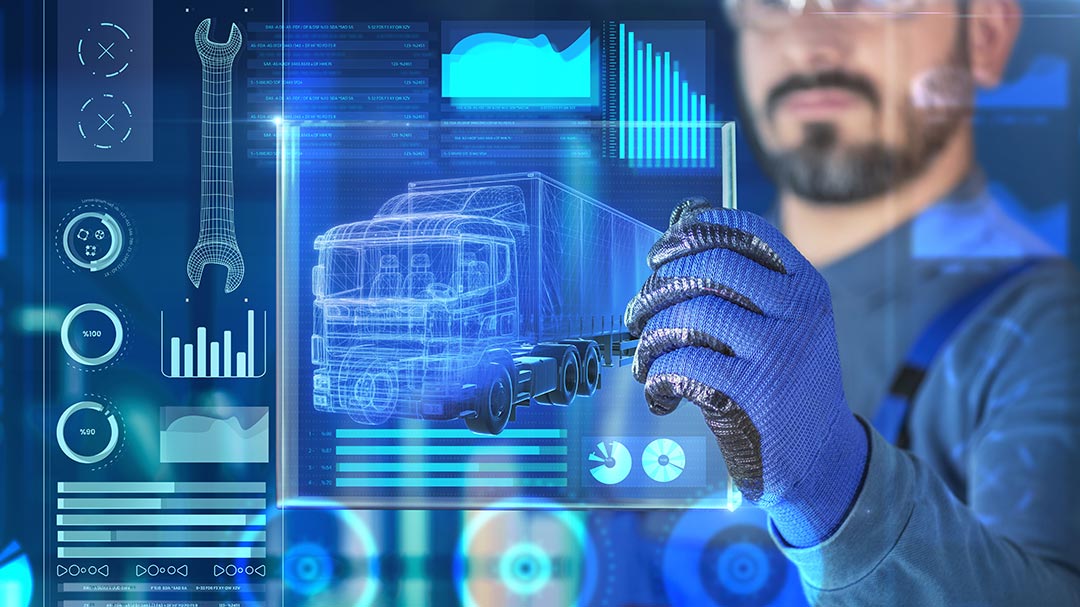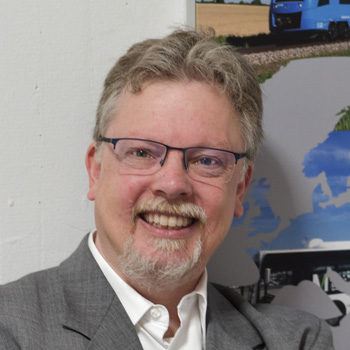The recuperation axle of the future

- Photos: iStock, BPW, REFU Drive
- Date: 17.07.23
As a recuperation axle, BPW ePower recuperates energy while driving and when braking the trailer and can thus quietly supply the cooling units of temperature-controlled transports with electricity without emissions. It allows the truck trailer to recuperate energy independently of the tractor unit and thus promotes sustainable transport. The technology can now be further developed in a research project together with universities and another industrial company. According to Dr Armin Schmiegel, Senior Vice President of R&D at REFU Drive GmbH, the electrically driven axle is being completely redesigned for this purpose: “We are investigating the question of what recuperation axles should look like in five to ten years, and we believe in a systematic reduction in the number of components. For example, inverters could also perform the tasks of gearboxes and sensors.”

We are investigating the question of what recuperation axles should look like in five to ten years, and we believe in a systematic reduction in the number of components.
New possible uses are conceivable
In other words, axle recuperation is being rethought – with technologies that may not even exist today. “If you follow this train of thought, some interesting questions arise that we want to answer right now,” says Armin Schmiegel. “This includes thinking about how the current motor can be made more compact – while retaining the same power. Also, can the double inverter that we currently use be shrunk to the size of a milk carton and then be integrated into the axle?” In the current development phase, the teams are investigating which technologies, circuits and semiconductors could make all of this possible. Another question is how the external sensors could become dispensable. “For example, if I want to remove the rotation sensor, how can we detect whether the wheel is turning? Processes already exist, but up to now not for the motors that would be ideal for this application,” says Schmiegel. “One option is for the inverter to take over this task and become a sensor.” Other possible uses are also conceivable for the future: at present, the recuperation axle can be used to supply cooling trailers – perhaps soon it could also be used to drive the tractor unit or other auxiliary units?
Goal: a demonstrator for the fully integrated, intelligent recuperation axle
The project bears the name “RekuTrAx” – an abbreviation of “Recuperation beam axle”. It is being promoted by Federal Ministry for Economic Affairs and Climate Action (BMWK). German Aerospace Center is supporting the project as the promoter. Four partners are jointly implementing the project: In addition to BPW, these are REFU Drive GmbH, suppliers of drive and auxiliary drive converters and energy storage systems for drive technology, as well as Institute for Mechatronic Systems at Leibniz University Hannover and Karlsruhe Institute of Technology. The goal is to develop a demonstrator for a fully integrated, intelligent recuperation axle – and to prove that it can reduce CO2 emissions from commercial vehicle fleets. The latter will not be realised by a prototype for road tests, but by models and simulations which – combined with component and system measurements – will show how much CO2 can be saved.

While the research sector likes to take more time to examine questions as deeply as possible, the focus of industry is also more on economic aspects. I find that this provides a perfect synergy.
Perfect synergy between research and industry
“It is exciting that the two worlds of research and industry are coming together in this project,” says Katharina Kermelk, Product Manager for Digital Products at BPW. “While the research sector likes to take more time to examine questions as deeply as possible, the focus of industry is also more on economic aspects. I find that this provides a perfect synergy.” Our university colleagues have brought many new stimuli with them: “For example, we are using a completely different type of motor here, which is much more compact and which we now want to convert for this industrial application”. And the researchers are also confronted with completely new questions: “Developing a new inverter also means breaking new ground on the part of the university,” says Armin Schmiegel. “But even during the first conversations there was a sense of anything but bafflement, but rather interested curiosity. I’m surprised how quickly the colleagues settled in and I’m looking forward to good results.” The industrial partners could then play to their strengths and provide support along the path from sample to prototype to product. “So at this point, the challenge is to exploit freedom of research and at the same time narrow down the solution space in such a way that we keep a concrete product in mind as a goal.”
Use cases checked with AI
The promotional project started in mid-2022 and will run until the end of 2025. In the first phase, market requirements and use cases were considered – including those “that go beyond classic refrigeration machine operation”, reports Kermelk. “We noted down various concepts of what the axis could look like in the future and evaluated them within the team as a whole. We jointly decided on three essential concepts, which we are now investigating in depth.” AI methods and extensive simulations from the Karlsruhe Institute of Technology were used to evaluate the use cases. “This approach has produced very interesting results and has given us a sense of the direction this axle will take, and also what kind of performance it will have,” says Schmiegel. “Now the task is to implement this product. “It is completely open as to what precisely the new axle will look like in the end,” says Katharina Kermelk: “At this point we cannot say whether its appearance will change. But it will be even more compact and will contain new technical solutions.” And one thing it will certainly also be able to do is make commercial vehicles quieter, emission-free and more energy-efficient – and thus help shape the energy transition and green mobility of the future.

